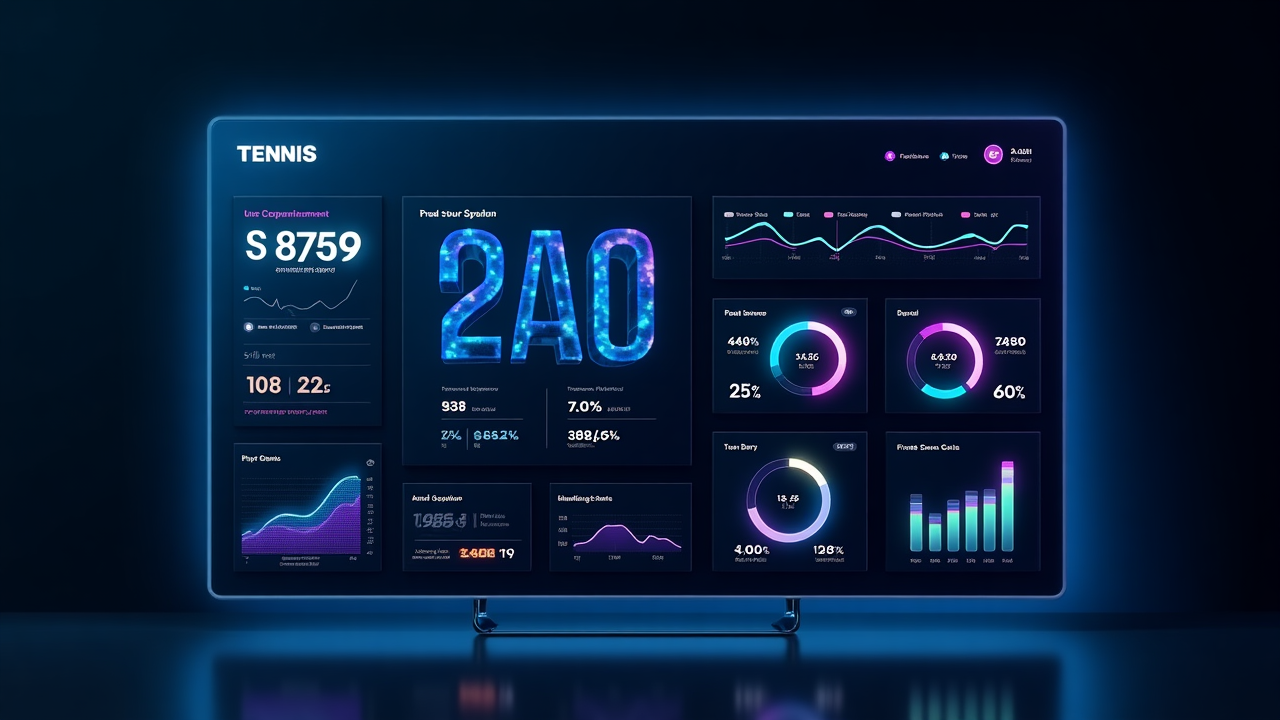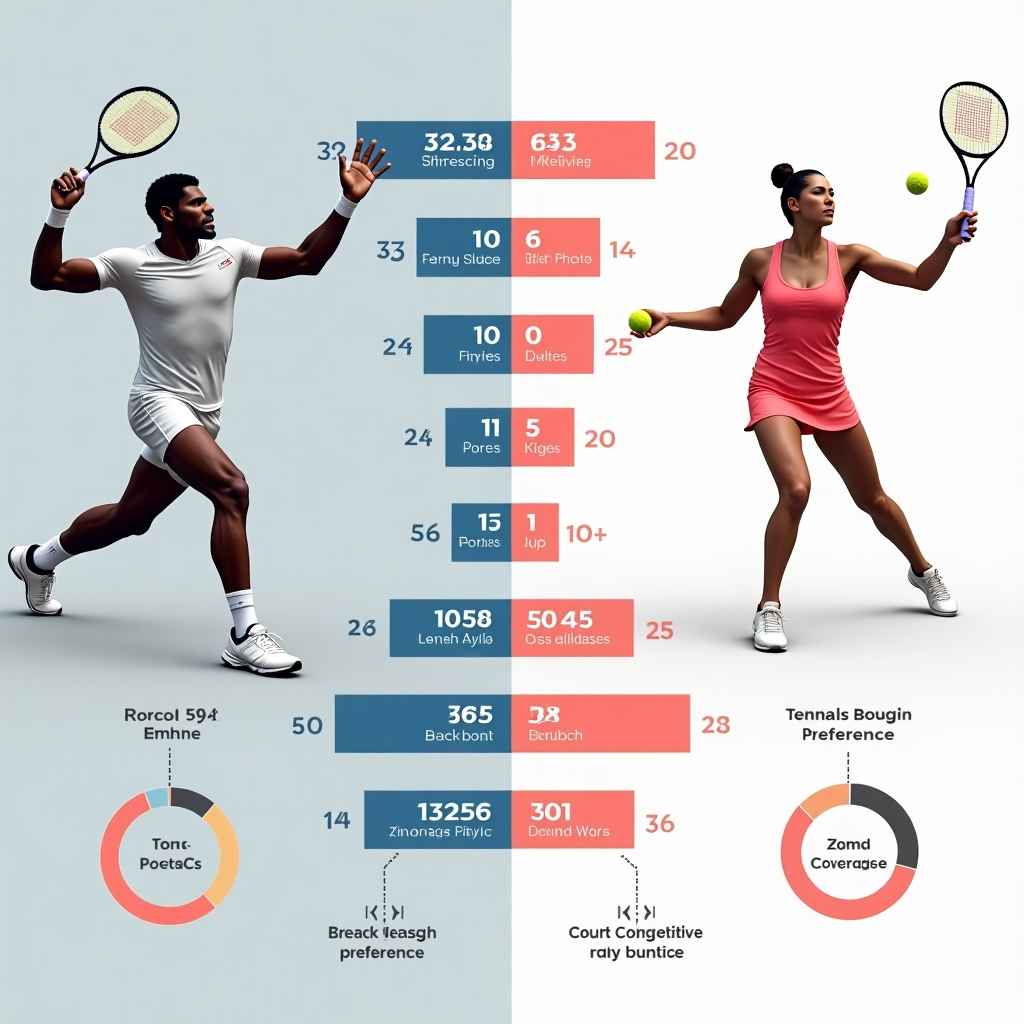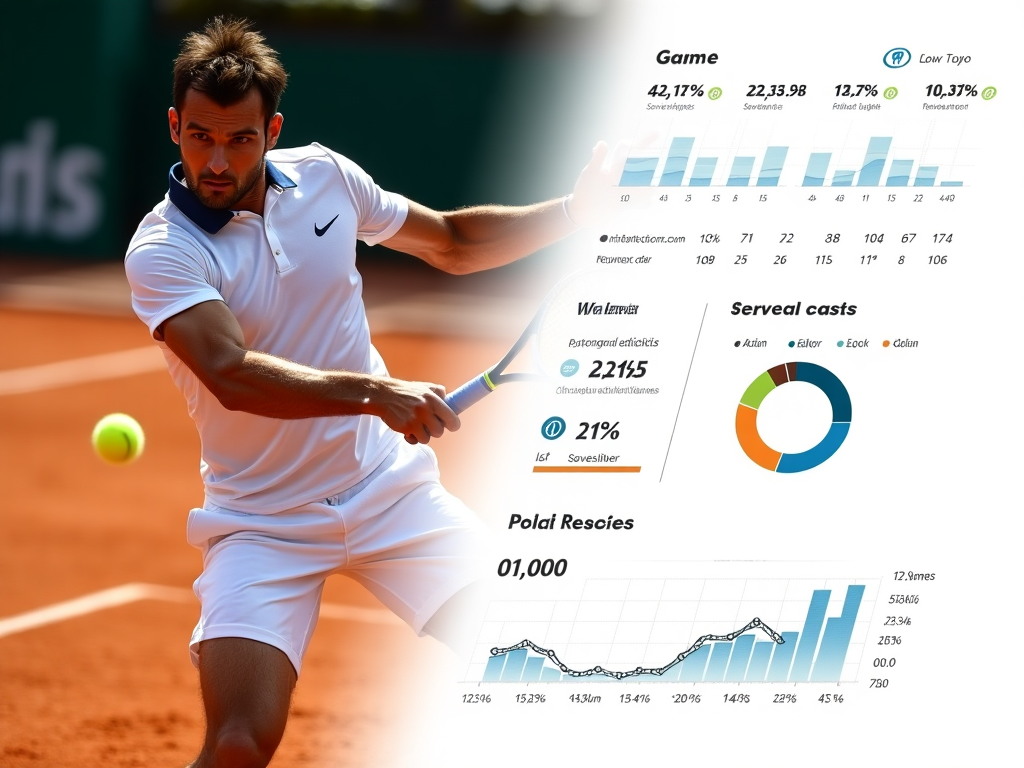Roland Garros Statistics & Beyond
Discover comprehensive statistical insights into French tennis excellence. From ATP and WTA data to Roland Garros historical records, explore the numbers that define champions.

Discover comprehensive statistical insights into French tennis excellence. From ATP and WTA data to Roland Garros historical records, explore the numbers that define champions.

Access verified data from the most authoritative tennis organizations worldwide
The Association of Tennis Professionals provides comprehensive statistical coverage of men's professional tennis. Access detailed player rankings, tournament results, head-to-head records, and performance metrics spanning decades of competition history. The ATP database includes serve statistics, return percentages, break point conversion rates, and match win-loss records across all surfaces.
The Women's Tennis Association offers extensive statistical resources covering women's professional tennis at the highest level. Explore player profiles featuring career achievements, current form indicators, and detailed match statistics. The WTA platform tracks serve speeds, first serve percentages, aces per match, double faults, and winning percentages on first and second serve points.
The French Open maintains meticulous records dating back to 1891, providing unparalleled historical context for clay court tennis. Discover championship rolls, memorable match statistics, and the evolution of playing styles on terre battue. The archives document every champion, finalist, and notable performance throughout the tournament's prestigious history.
Explore cutting-edge tools for deep tennis analytics and insights

FlashScore delivers instantaneous match statistics as points unfold on courts worldwide. This platform revolutionizes how fans follow tennis, offering granular data visualization that captures every serve, return, winner, and unforced error in real-time. The interface updates within seconds, providing live commentary alongside numerical breakdowns of game flow.
The platform aggregates information from tournaments across all continents, enabling comparison between current matches and historical benchmarks. Users can analyze serving patterns, rally lengths, and momentum shifts throughout matches. Advanced filters allow sorting by surface type, tournament category, and player nationality, making it invaluable for French tennis enthusiasts tracking their favorite competitors.

Ultimate Tennis Statistics represents the pinnacle of tennis data science, offering sophisticated analytical tools that go far beyond basic match results. This platform employs advanced algorithms to calculate player performance metrics across multiple dimensions, providing insights that professional analysts and dedicated fans alike find invaluable.
Detailed matchup histories showing how players perform against specific opponents across different surfaces and conditions
Track player success rates at specific events, including French Open performance trends over multiple years
Comprehensive data on serve effectiveness, return games, break points, and tiebreak performance
Analyze how players adapt their game across clay, grass, and hard courts with detailed metrics

TennisAbstract pioneered the application of sabermetric principles to tennis, introducing concepts like "dominance ratio" and contextualized serve ratings. Created by data enthusiasts for analytical minds, this platform transforms raw match data into meaningful insights about player quality and performance trends.
Sophisticated algorithms forecast match outcomes based on historical performance patterns, surface preferences, and current form indicators. The models account for factors like recent injury history, tournament scheduling, and head-to-head dynamics.
Beyond official ATP and WTA rankings, TennisAbstract calculates Elo ratings and other performance-based metrics that may better reflect current playing strength. These alternative systems often identify rising talents before they break into top rankings.
The platform continuously develops new metrics to capture nuanced aspects of tennis performance, from clutch point performance to consistency measurements that reveal player reliability under pressure situations.
Exploring the rich statistical legacy of tennis on clay

Roland Garros stands as the ultimate test of tennis endurance and clay court mastery. Since its inception in 1891, the tournament has witnessed extraordinary achievements that have shaped tennis history. The statistical record reveals fascinating patterns about dominance on terre battue, from the unprecedented success of certain players to the evolution of playing styles adapted to the slower, higher-bouncing surface.
French players have enjoyed remarkable success at their home Grand Slam, with the tournament serving as a showcase for homegrown talent. The statistics document multiple French champions across both men's and women's competitions, highlighting the nation's contribution to tennis excellence. Notable achievements include longest winning streaks, youngest and oldest champions, and records for most titles won in various categories.
French tennis has produced numerous Roland Garros champions who have left indelible marks on the tournament's history. The statistical record celebrates these achievements while providing context for their significance within the broader tennis landscape.

Understanding playing styles through statistical analysis
Statistical comparison between players reveals fascinating insights into different approaches to tennis excellence. By examining key performance indicators across multiple dimensions, we can understand what makes each playing style effective and how players adapt their strategies against different opponents.
Players who dominate from the baseline typically show high winner counts, strong return game statistics, and excellent rally win percentages. Their data reveals consistent depth on groundstrokes, measured through average shot placement and court positioning analytics.
All-court players demonstrate balanced statistics across multiple categories, showing proficiency in serve-and-volley points, baseline rallies, and transition game effectiveness. Their adaptability appears in varied shot selection and strategic point construction.
Counter-punching specialists excel in return games, forced error ratios, and extended rally success rates. Statistical analysis shows their ability to neutralize opponent aggression while maintaining low unforced error counts across long matches.

Measuring the athletic dimensions of professional tennis
Serve speed represents one of the most measurable and impactful statistics in tennis. Modern tracking technology captures the velocity of every serve, allowing detailed analysis of serving patterns and effectiveness. The data reveals correlations between serve speed, first serve percentage, and point winning probability.

Rally length provides crucial insights into playing styles and surface characteristics. Clay court matches typically feature longer rallies compared to grass or hard courts, reflecting the slower pace and higher bounce of terre battue. Statistical tracking of rally duration helps identify player endurance, shot consistency, and tactical approaches.

Physical metrics in tennis extend beyond simple speed and duration measurements. Advanced tracking systems now capture court coverage distances, acceleration patterns, and reaction times. These data points combine to create comprehensive player profiles that reveal strengths, weaknesses, and areas for potential improvement.
For French tennis enthusiasts, comparing these metrics across different generations of players provides fascinating historical context. The evolution of equipment technology, training methodologies, and playing surfaces all influence these statistics, making longitudinal analysis particularly valuable for understanding how the game has developed over time.
How data science forecasts match outcomes

Modern tennis prediction models employ sophisticated statistical techniques to forecast match outcomes with increasing accuracy. These systems analyze hundreds of variables including recent form, head-to-head records, surface preferences, tournament history, and even factors like travel schedules and weather conditions.
Prediction algorithms incorporate years of match results, creating baseline expectations for player performance. The models weight recent matches more heavily while still considering long-term career trajectories and historical patterns against specific opponents.
Sophisticated models apply surface-specific coefficients to account for varying player effectiveness across clay, grass, and hard courts. French Open predictions particularly emphasize clay court performance history, recognizing the unique demands of Roland Garros.
Recent performance trends receive careful analysis, with models identifying momentum shifts and confidence patterns. Win-loss records over the past few weeks combine with quality-of-opponent metrics to assess current playing level.
The most advanced prediction systems achieve accuracy rates of 65-75% for match outcomes, significantly better than random chance. However, the inherent variability in tennis means perfect prediction remains impossible, with upsets and unexpected results continuing to surprise even the most sophisticated analytical models.
Insights from passionate tennis enthusiasts
"As a longtime follower of French tennis, having access to comprehensive statistical platforms has transformed how I understand the game. The depth of historical data available for Roland Garros performances is particularly impressive, allowing me to trace the evolution of playing styles on clay over decades."
"The real-time match statistics have completely changed my viewing experience. Being able to see serve speeds, rally lengths, and point-by-point momentum shifts as matches unfold adds incredible depth to understanding tactical battles. It's especially valuable during French Open fortnight when following multiple matches simultaneously."
"The player comparison tools help me appreciate the nuances that distinguish different playing styles. Understanding how French players have historically adapted their games for Roland Garros success provides fascinating context for current competitions. The statistical evidence really illuminates what makes champions successful on clay."
"Being able to access detailed head-to-head statistics and surface-specific performance data has made following tennis so much more engaging. The platforms provide context that television broadcasts often miss, particularly regarding historical matchups and player tendencies in crucial moments."
"The predictive models add an interesting dimension to match anticipation. While upsets still happen regularly, understanding the statistical basis for predictions helps appreciate when players exceed expectations or struggle against specific opponents. It's particularly interesting for French Open draws."
"Having comprehensive statistical resources available has deepened my appreciation for tennis strategy and player development. Tracking how young French players progress through the rankings and improve their clay court statistics over seasons provides compelling narratives beyond just match results."

Share your passion for French tennis and statistical analysis
Whether you're interested in discussing French tennis history, exploring statistical methodologies, or sharing insights about Roland Garros performances, we welcome connections with fellow tennis enthusiasts throughout New Zealand.
84 Main St, Willaura VIC 3379
+61353541372
We typically respond within 24-48 hours
